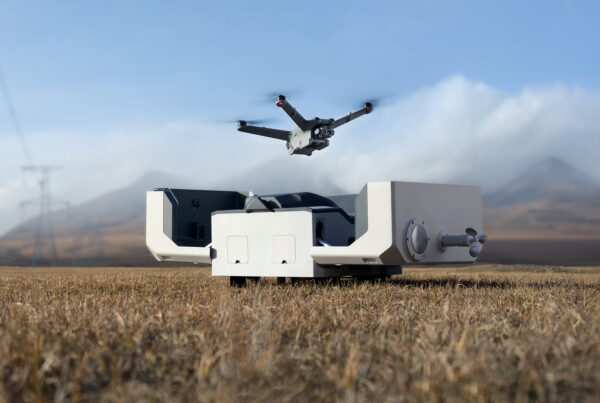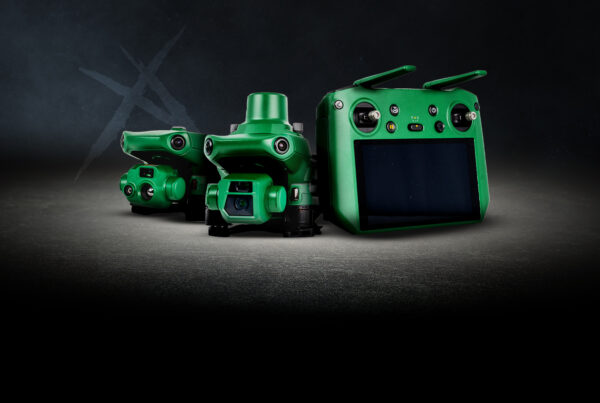
As more organizations begin to see the benefits of UAV technology, the implementation of a drone program is quickly becoming the next exciting project for organizations to pursue. A good drone program can automate manual workflows, improve efficiency, and cut down costs long-term—within any industry, the benefits are insurmountable.
However, business leaders shouldn’t lose sight of what it takes to begin a proper drone program, and what it takes to support the program itself and future growth. Because drone programs are designed to cut down on time and manual operations, a drone program is inherently scalable if implemented properly. There are other aspects to consider outside of the program itself, like ensuring a business’ infrastructure, networks, and operations can support organizational growth.
Aligning Goals, Initiatives, and Departments
During the discovery process of a drone program, you should try to involve as many key stakeholders as possible. This includes IT leaders, like CTOs or network architects, who are responsible for system integrations and digital platforms, project managers, and other directors or leaders that will be responsible for overseeing or making crucial decisions related to the project.
By involving crucial stakeholders, you will be able to align the needs and goals across various departments and turn your drone program into a strategic business initiative. We also recommend involving a senior-level operations leader. As we mentioned earlier, it’s important to ensure a business’ infrastructure can support rapid growth. By involving a Chief Operating Officer or any other operations executive that is responsible for the day-to-day administrative functions of a business, you will have more success receiving the support of other departments. Additionally, COOs are usually tasked with spearheading new initiatives, as they are familiar with the policies, practices, and procedures that govern the organization. In most cases, a COO will be responsible for managing a drone integration project. If this is the case for your organization, your COO will probably be the liaison between other C-suite executives, and the teams directly involved in the implementation of the project.
Get Input from Ground Teams
Ensuring your ground team is onboard with the technology is crucial to the program’s success. Field teams need to see the value of drone technology, and understand that drones are simply another tool to help them perform their job more efficiently. This is why it’s also important to involve service or field managers; you will need to coordinate with the technicians who will be using the drones and have them undergo the necessary training to be able to fly drones safely and effectively. Don’t forget that technicians and field agents understand how operations work in real-time, day-to-day. If your drone project will be automating processes, chances are, you need to update procedures to complement your new workflow. Consult the employees who will be working with the drones directly—they can provide insight into valuable process improvements.
Plan for Training and Hiring Needs
Keep in mind that any commercial pilots must be Part 107 certified. If you don’t have team members that are already certified pilots, you may want to consider the hiring needs you will have in order to support a drone program implementation.
Depending on how your business operates, your COO may be in charge of the human resources department, as well as the field or service teams. It is essential that both of these departments are aligned. You want to make sure that your drone program has the field/pilot team necessary to reap the benefits of a drone program, and that your HR team has the time necessary to recruit and onboard new hires.
Other critical stakeholders throughout the project are IT managers or CTOs. Drone programs run on automation platforms, and the data collected by drones may need to be processed and distributed across various networks throughout the business. Whoever is in charge of your IT department or internal networks will need to support the drone program throughout the initial stages of implementation. Automation and integration require access to the backends of different programs, and perhaps API connections to the different software or systems your business uses. If you are implementing a custom solution, whether it has been developed in-house or by a third party, your network or IT manager will need to provide support during the integration to ensure there are no issues that could affect live systems. It’s possible that you may need to hire additional members to support a new program.
Involving Third-Party Experts
Starting a drone program at any business has a lot of steps and technicalities you will need to prepare for. If your industry is highly regulated, there may be additional checkboxes you will need to mark off during your implementation. We recommend you work with knowledgeable third-party subject matter experts you may not have within your team. These experts could be project consultants, operations specialists, drone pilots or drone experts within your industry, or even developers.
Drone flights are limited by the rules and regulations of the FAA, as well as local and state laws. Because the FAA requires licensing on behalf of the pilot, and other waivers or authorizations based on your specific industry and operations. You should prepare to have legal consultation on retainer, preferably an attorney or a firm that specializes in drone or aviation law. They will be able to guide you through any additional policies or procedures you should implement, and they will ensure that your team is well aware of what local laws govern their airspace.
Our team at Drone Nerds has helped customers throughout various industries implement successful, scalable drone programs in their businesses and organizations. If you would like more information on how you can prepare for a drone implementation project, check out this recommended reading.
Reach out to us at experts@dronenerds.com to get started on your drone program.




